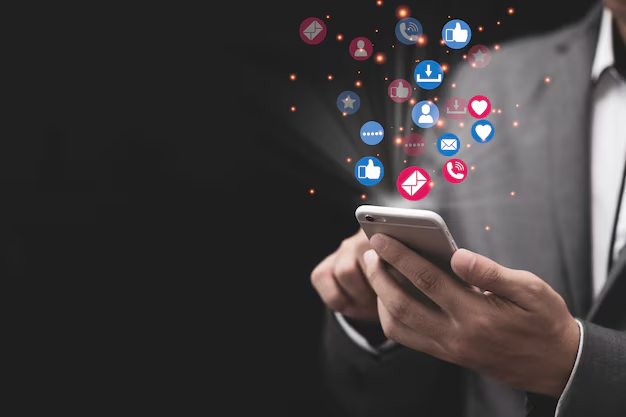The Evolution of Social Media: From Connection to Communication
Social media has evolved from simple tools for connection to powerful platforms of communication, influencing how we interact with each other, consume information, and engage with brands. Initially designed as social networking platforms to stay connected with friends and family, social media today has transformed into a global force driving communication, business, entertainment, and activism. Let’s take a deep dive into how social media has evolved over the years and what it means for us today.
Early Days of Social Media: Connection and Networking
The earliest forms of social media appeared in the late 1990s and early 2000s with platforms like SixDegrees, Friendster, and MySpace. These websites primarily allowed users to connect with others, form friend networks, and exchange messages. SixDegrees, launched in 1997, is considered the first true social network. Its focus was on connecting individuals and allowed users to list their friends, much like Facebook does today. Friendster, released in 2002, grew to millions of users but eventually faltered in the face of competition.
MySpace took over in the mid-2000s, offering a personalized experience, enabling users to design their own profiles, connect with friends, and share music and videos. MySpace allowed users to creatively express themselves and quickly became the most visited site for a time, particularly among musicians and young adults.
However, these early platforms were still relatively basic, and communication was largely one-way. Users would update their profiles and share personal information, but the interaction was minimal compared to what we see today.
The Rise of Facebook and Twitter: From Connection to Social Interaction
The landscape of social media changed significantly with the launch of Facebook in 2004. Initially limited to Harvard students, Facebook quickly expanded to other universities and then the general public. Facebook made social networking more interactive by allowing users to post status updates, “like” others’ content, share photos, and engage in more dynamic ways. It was the first social platform to make a real impact on global communication, allowing people to not only stay in touch but to actively share their lives and thoughts with others.
In the same period, Twitter emerged in 2006, and while it started as a microblogging service, it introduced a new form of communication: brevity. The 140-character limit (later extended) pushed users to communicate concisely and instantly. Twitter became a crucial tool for real-time conversations, news updates, and public debates. Hashtags, another key feature of Twitter, allowed users to track and participate in global conversations on any topic.
As Facebook grew, it became more than just a social network — it became a tool for business promotion, online events, and even political campaigns. People started using these platforms not just to stay connected but to voice opinions, market products, and start movements.
Visual Content Dominates: Instagram, YouTube, and TikTok
As the internet became more visually driven, platforms like Instagram, YouTube, and TikTok revolutionized the way we communicate. These platforms turned visual content into a primary means of interaction.
Instagram, launched in 2010, capitalized on the growing interest in visual storytelling. With its photo-sharing features and later, the addition of Stories, users found new ways to communicate and engage through photos and short videos. Instagram became the go-to platform for influencers, brands, and everyday people who wanted to share their lives through images and short-form content.
YouTube, founded in 2005, quickly became the dominant video-sharing platform. It offered creators the ability to share longer videos, tutorials, reviews, and entertainment content, leading to a new era of online communication. Over time, YouTube evolved into a community where users can engage with content creators directly through comments, live streams, and collaboration.
TikTok, which gained immense popularity in 2016, revolutionized short-form video content. With its algorithm-driven feed, TikTok made it easy for users to create and discover viral content. The app’s interactive nature allowed users to remix and duet with others, creating a new form of participatory communication.
Social Media’s Role in Communication: News, Activism, and Business
Today, social media serves as a hub for communication across multiple sectors. Platforms like Twitter and Facebook have become essential for news dissemination. In some parts of the world, social media is often the first place people turn to for breaking news or live updates. Traditional media outlets use these platforms to engage with their audience, share articles, and cover live events.
Social media has also become a tool for activism. Movements like #BlackLivesMatter, #MeToo, and #ClimateAction gained momentum through social media platforms. These hashtags brought attention to important social issues, mobilized people to take action, and connected individuals who might not have otherwise been able to share their voices.
Additionally, businesses use social media for customer service, marketing, and brand communication. From Facebook ads to Instagram influencers, social media has opened up new channels for businesses to connect with their customers, create brand loyalty, and drive sales.
7 FAQs About the Evolution of Social Media
- When did social media first begin? Social media began in the late 1990s with the launch of SixDegrees. It quickly evolved with platforms like Friendster and MySpace.
- What made Facebook different from earlier social media platforms? Facebook introduced a more dynamic and interactive way for users to communicate by adding features like status updates, likes, and newsfeeds.
- How has social media changed the way businesses operate? Social media provides businesses with direct access to customers, allowing for more personalized marketing, real-time customer service, and influencer partnerships.
- What role does social media play in modern activism? Social media has been instrumental in raising awareness about social issues, organizing protests, and giving a platform to marginalized voices.
- Why is visual content so important on platforms like Instagram and TikTok? Visual content is more engaging and shareable, and these platforms cater to users’ preferences for fast, visually appealing communication.
- How does Twitter impact real-time communication? Twitter is designed for quick, concise communication, making it ideal for live updates, news sharing, and public discourse.
- What is the future of social media communication? As technology continues to evolve, social media will likely incorporate more advanced AI, augmented reality, and virtual reality, further enhancing communication and interaction.
Conclusion
The evolution of social media has drastically shifted from a tool for simple connection to a complex ecosystem of communication, engagement, and influence. As we continue to advance technologically, social media will undoubtedly evolve even further, bringing new ways for us to interact, share, and express ourselves. Its role in personal communication, business, news dissemination, and activism has cemented its place as one of the most important communication tools of our time.
Key Takeaways
- Social media has evolved from simple networking platforms like MySpace to dynamic tools for real-time communication and visual storytelling.
- Platforms like Facebook, Twitter, Instagram, YouTube, and TikTok have shaped how we share information, engage with others, and conduct business.
- Social media has become a powerful tool for activism, business marketing, and news dissemination.
- As technology continues to advance, social media will evolve, offering new ways for people to communicate and interact across the globe.

